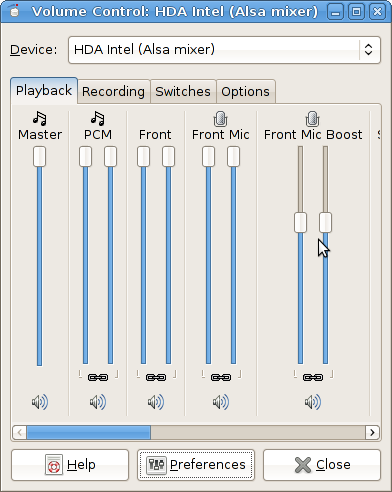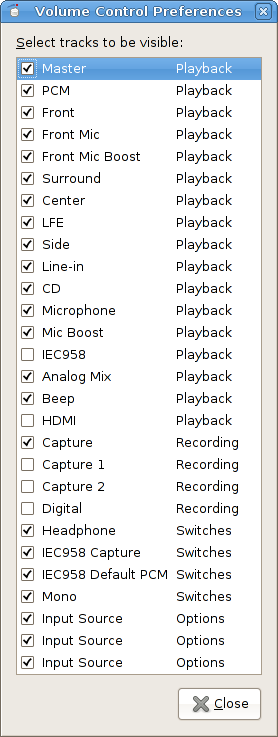After hearing about the recent MintCast mention of our experiment, I figured it was high time to post an update with what’s gone right and what’s been enraging about my experiences with Gentoo over the past month.
What’s Gone Right
- I’ve installed GNOME (Gentoo’s stable version is still 2.24.3, but I’m looking into the newest version) as I needed more of a true “desktop environment” – removable device mounting, in particular, wasn’t always functional in XFCE. Sometimes my external USB drives would be recognized and other times the system would just sit there as if nothing had happened. GNOME handles this task wonderfully, which I assume is in combination with dbus and HAL. I also like the toolbar customization features and login manager.
- The installation for VirtualBox 3 went really well – I have Windows XP running in a virtual environment for a dedicated accounting image with Simply Accounting 2007. (While I may be running Linux as my primary OS, we can’t afford to stop doing business.) Bridge mode for the network adapter works even better than it has on Windows for me. The VM has its own IP address on my network, allowing the router to manage port forwarding operations and continue with issuing invoices as usual.
- After giving up on Ekiga and conducting yesterday’s conference call using X-Lite on my Asus netbook running Windows, I gave VOIP on Linux another shot. I removed the Ekiga SIP account from the connection manager since it was giving me incredible grief. Access denied error messages, calls that wouldn’t complete and an odd signup process are not conducive to attracting users to your service! After adding my own Asterisk server credentials, I went ahead and made a test call – both internal extensions and external numbers worked great, and voice quality was wonderful.
- Networking support has also been improved with my GNOME installation. I can easily save favourite server mountpoints without having to define them in /etc/fstab, and related applications such as VLC seem to handle this style of network mapping in a more consistent manner. For example, mounting “/media/server” through fstab would often result in stuttery video playback from a SMB share. Performing the same operation using GNOME’s Connect to Server option seems to indicate the appropriate buffer size and the video plays smoothly as expected.
- The ISO downloader .EXE’s from MSDNAA work great under Wine! Just another example of how I could see potentially running Linux as a main system, even though I have to interact with Windows on a regular basis.
What’s Been Enraging
- Some fonts in web browsing still don’t anti-alias properly. It’s a very intermittent issue only appearing on certain sites, and as soon as I can find a page causing this issue I will get to the root cause. In the meantime, I’ve installed all the appropriate font packages using emerge – there may be a replacement for the “odd man out” in there somewhere.
- The mixer resets my primary volume to zero on every reboot.
- I need to use “overlays” and “autounmask” to enable some packages for the AMD64 architecture. autounmask is a pretty decent tool – it automatically finds package dependencies and allows me to force installation of a program that for some unknown reason isn’t available. layman also has helped in this regard, and a searchable directory of overlay packages is decent. I just installed Firefox 3.5 using this technique and all seems well.
- My mixer now shows the appropriate “mute/unmute” icons:

- Audio inputs and outputs on my “Intel HDA” card aren’t labelled as you might expect. Here’s a list of them:

Of these inputs and outputs, the appropriate one for my front microphone to actually work worth a damn? Capture. Incredibly intuitive.
That’s all I’ve got for now, but I’d appreciate any suggestions for new programs and neat tricks. Knock on wood that Portage doesn’t start acting like dpkg did on Sasha’s machine!

Might want to look at my ~/.fonts.conf Jake. Been wresting with this for awhile but all my fonts are displaying as I think they should.
http://linuxtidbits.wordpress.com/2008/11/25/better-lcd-font-rendering/
Thanks for the link! I applied the fonts.conf tweaks (as well as added ‘cleartype’ to my USE flags) and all new application launches have nice and smooth fonts. I only wish the same tweaks applied to my Windows VM. 😉